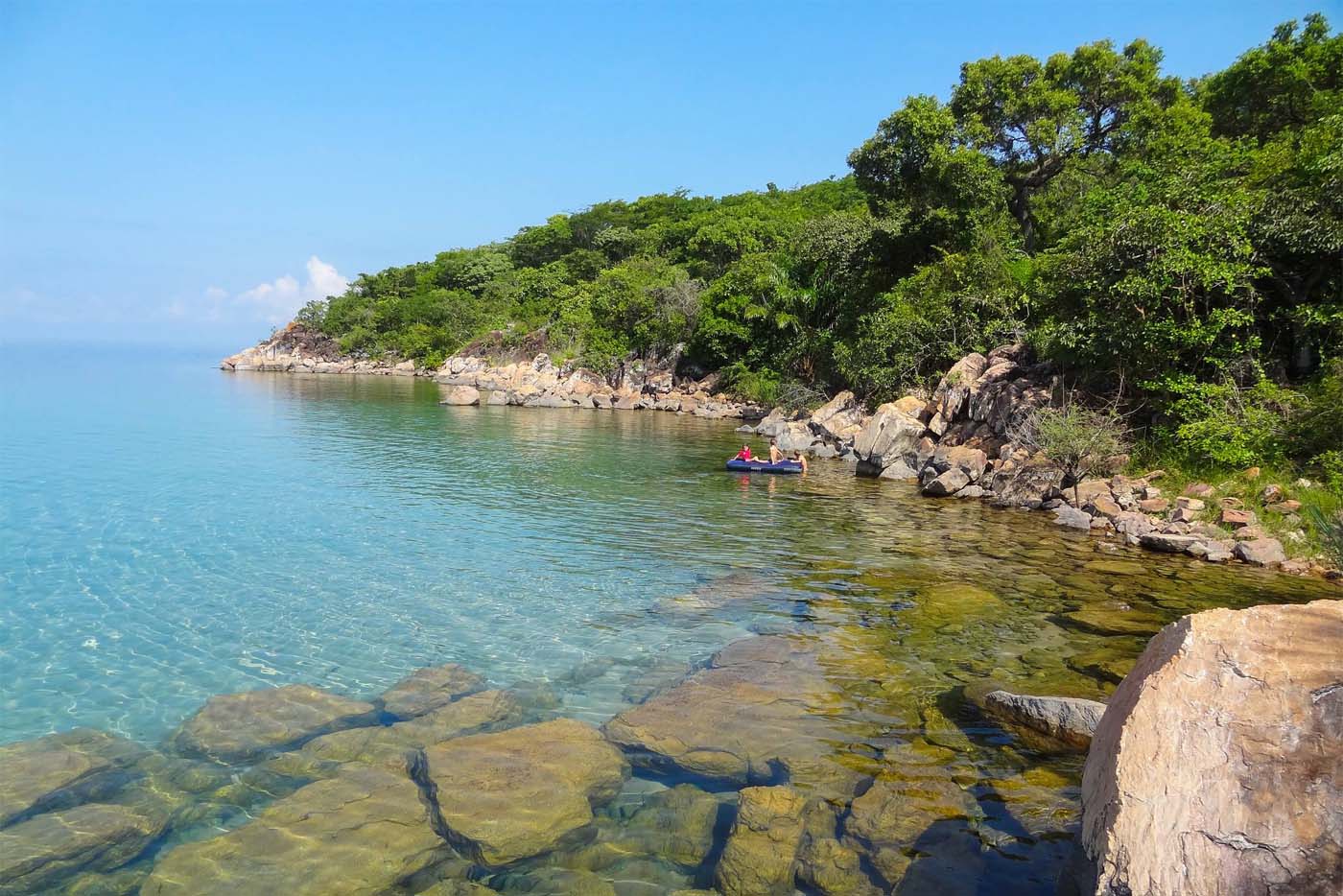Lakes are fascinating bodies of water that come in all shapes and sizes, and some can be incredibly deep. In fact, some of these lakes are so deep that they could easily swallow entire skyscrapers.
In this article, we’ll explore the top 20 deepest lakes in the world, from Russia’s Lake Baikal to Canada’s Great Slave Lake. Discover the unique characteristics and breathtaking scenery of these incredible bodies of water, and learn about their importance to local ecosystems and cultures.
READ THIS NEXT: These are the 10 Deepest Lakes in Africa
1. Lake Baikal(5,387 feet) – Russia

Lake Baikal is a vast and ancient freshwater lake located in Russia. With 5,387 feet or 1,642 meters, it is the deepest lake in the world and also the largest freshwater lake by volume, holding roughly 20% of the Earth’s fresh water. The lake is over 25 million years old and is surrounded by picturesque mountains and forests.
The water in Lake Baikal is incredibly clear, with visibility of up to 130 feet (40 meters) in some areas. The lake is also incredibly rich in biodiversity, with over 1000 plant species and over 2500 animal species according to Wikipedia, including the endemic Baikal seal. In winter, the lake freezes over, creating a stunning icy landscape that attracts tourists from all over the world. Lake Baikal is also an important source of freshwater for the surrounding region and a UNESCO World Heritage Site.
2. Lake Tanganyika(4,823 feet) – Africa
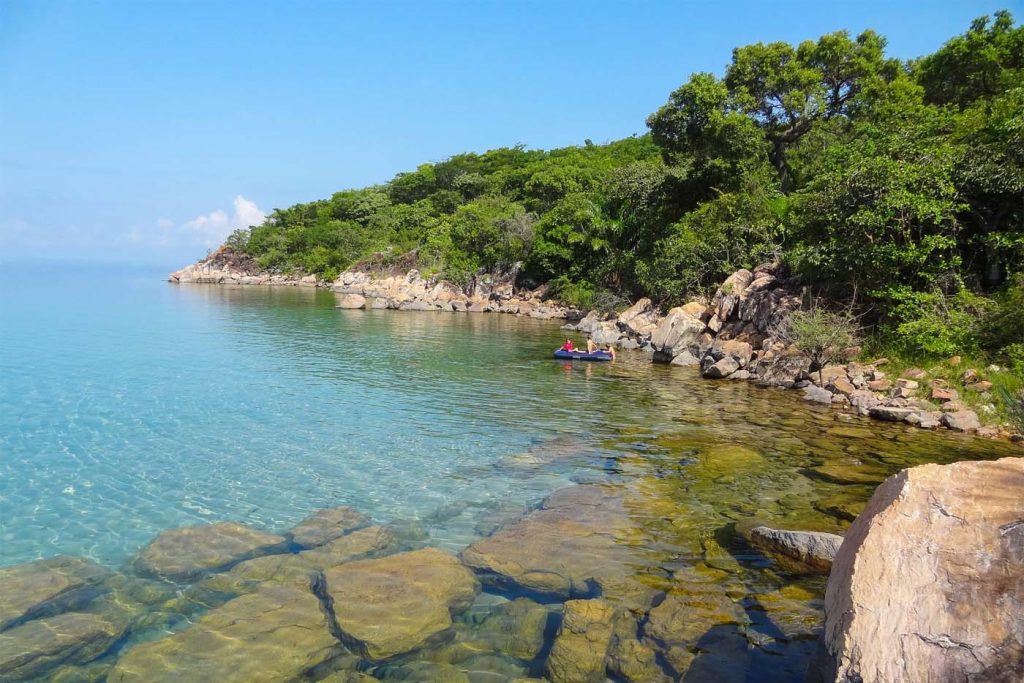
Lake Tanganyika is an African Great Lake that is shared by four countries: Burundi, Tanzania, Zambia, and the Democratic Republic of the Congo. It is the second deepest lake in the world and the second oldest freshwater lake, estimated to be between 9 and 12 million years old.
The lake is roughly 420 miles (676 km) long and 50 miles (80 km) wide, with a maximum depth of 4,823 feet (1,470 meters). Lake Tanganyika is also known for its incredible biodiversity, with over 1,500 species of plants and animals, many of which are found nowhere else in the world. The lake is home to several hundred species of fish, including the famous Tanganyika cichlids, which are popular in the aquarium trade. The lake also plays an important role in the local economy, supporting fisheries and tourism.
3. Caspian Sea (3,363 feet) – Asia and Europe
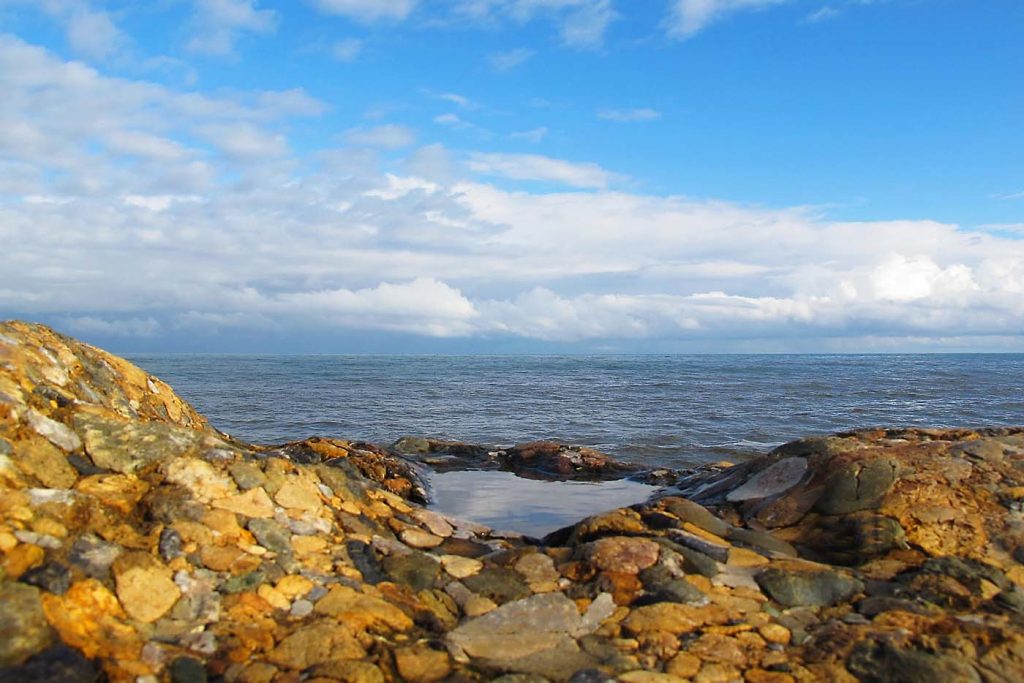
The Caspian sea is a large saltwater lake located in Asia and Europe, with the majority of its coastline belonging to five countries: Russia, Kazakhstan, Turkmenistan, Iran, and Azerbaijan. It is the largest lake in the world by surface area, covering roughly 143,000 square miles (371,000 square km).
Despite being called a lake, it is actually classified as a sea due to its size and saline content. The lake has a maximum depth of 3,363 feet (1,025 meters) and is an important source of oil and natural gas for the surrounding region. The Caspian Sea is also home to a unique ecosystem, with over 400 endemic species of plants and animals, including the Caspian seal. In recent years, there has been concern over the impact of oil drilling and other human activities on the fragile ecosystem of the Caspian Sea.
4. Lake Vostok (3,300 feet) – Antarctica
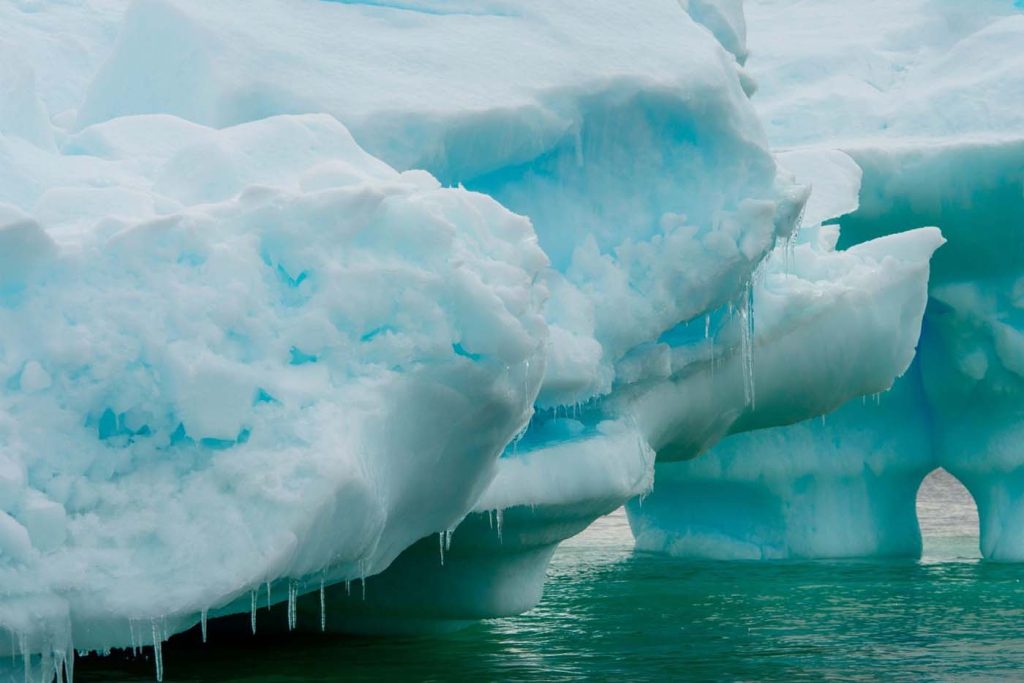
Vostok Lake is a unique and mysterious body of water located beneath the ice sheet of East Antarctica. It is considered to be one of the largest subglacial lakes in the world and is estimated to be around 3,300 feet (1,000 meters) deep. The lake is so isolated that it has been sealed off from the atmosphere for millions of years, making it one of the most extreme and inhospitable environments on Earth. Despite the harsh conditions, Vostok Lake has been of great interest to scientists due to the possibility of finding unique and ancient forms of life that may have evolved in isolation.
5. Viedma Lake (3,000 feet) – Argentina
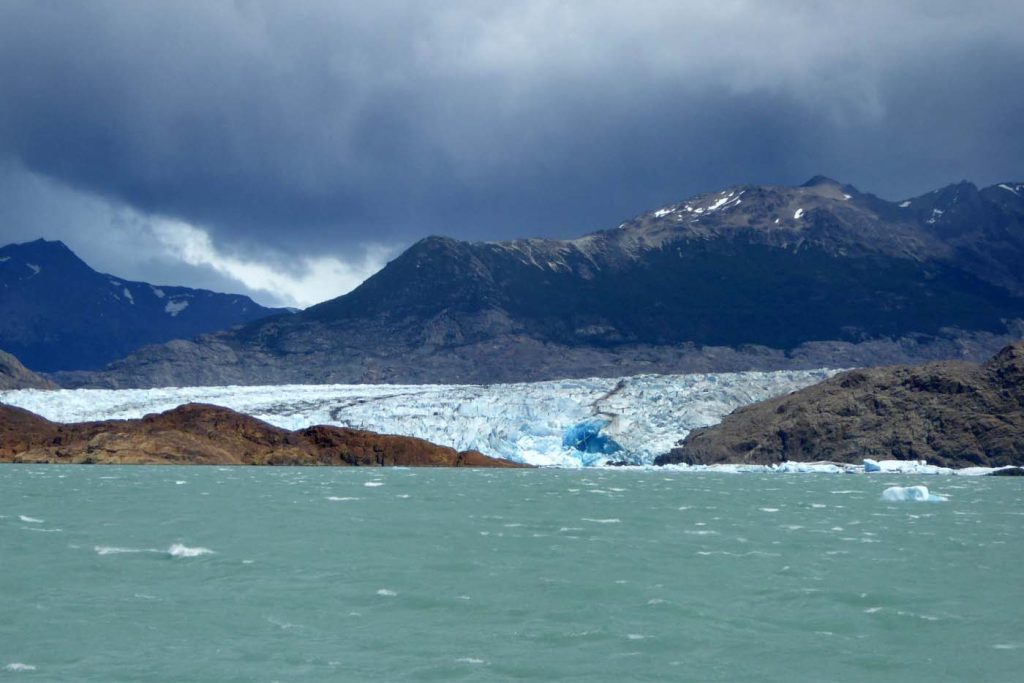
Viedma Lake is a stunning glacier-fed lake located in the Patagonian region of Argentina. According to recent estimates, It has a depth of 3,000 feet (900 meters), making it one of the deepest lakes in South America. The lake is surrounded by snow-capped mountains and glaciers, making it a popular destination for tourists and outdoor enthusiasts. The glacial waters of Viedma Lake are known for their stunning turquoise color, which is caused by the reflection of light off suspended glacier sediment in the water.
6. O’Higgins/San Martín Lake (2,742 feet) – Chile and Argentina
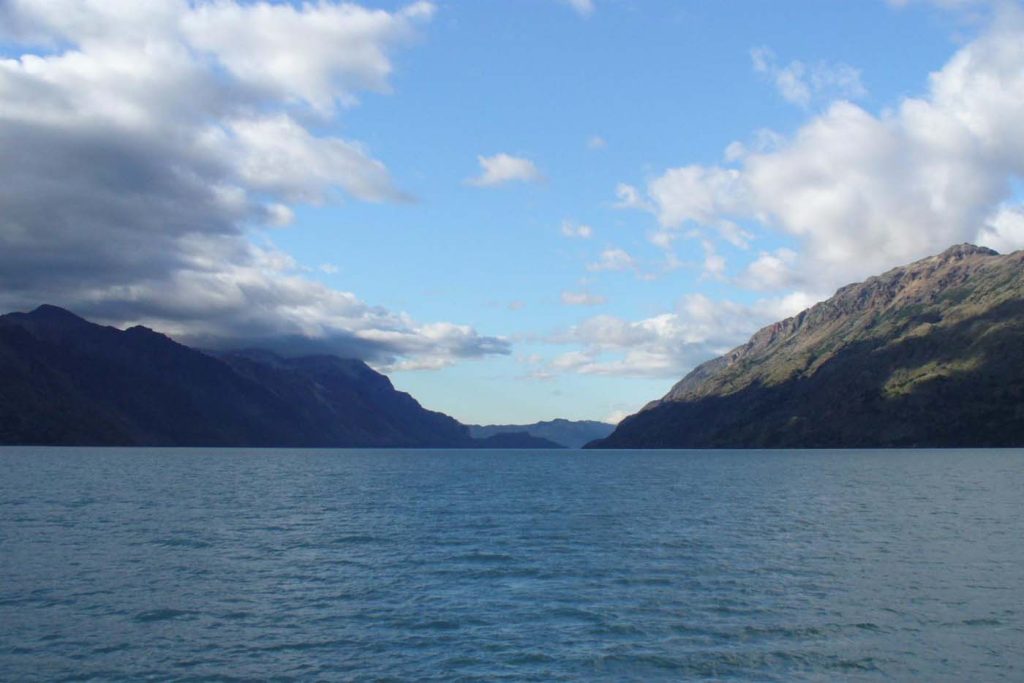
O’Higgins/San Martín Lake is a large glacial lake located on the border between Chile and Argentina. The lake is named after the Argentine general José de San Martín and the Irish-born Chilean Bernardo O’Higgins, who were instrumental in securing South American independence from Spanish rule.
It has a depth of approximately 2,742 feet (836 meters), making it one of the deepest lakes in the Americas. The lake is fed by a number of rivers and glaciers and is surrounded by towering mountains and stunning natural scenery. The area surrounding O’Higgins/San Martín Lake is known for its rugged wilderness and is a popular destination for outdoor activities such as hiking, fishing, and kayaking. The lake is also home to a number of indigenous communities who have lived in the area for thousands of years and continue to maintain their traditional way of life.
7. Lake Malawi (2,316 feet) – Malawi Mozambique and Tanzania

Lake Malawi, located between Malawi, Mozambique, and Tanzania, is the seventh deepest lake in the world. It is also the second deepest lake in Africa, with a maximum depth of 2,316 feet or 706 meters. Lake Malawi is home to a diverse range of fish species, including over 1,000 species of cichlids, which make up the majority of the lake’s fish population. In addition to its impressive biodiversity, Lake Malawi is also a major source of freshwater for the surrounding communities. It is a popular destination for tourism, with opportunities for water sports, fishing, and wildlife viewing.
8. Lake Ysyk or Issyk-Kul Lake (2,192 feet)-Kyrgyzstan
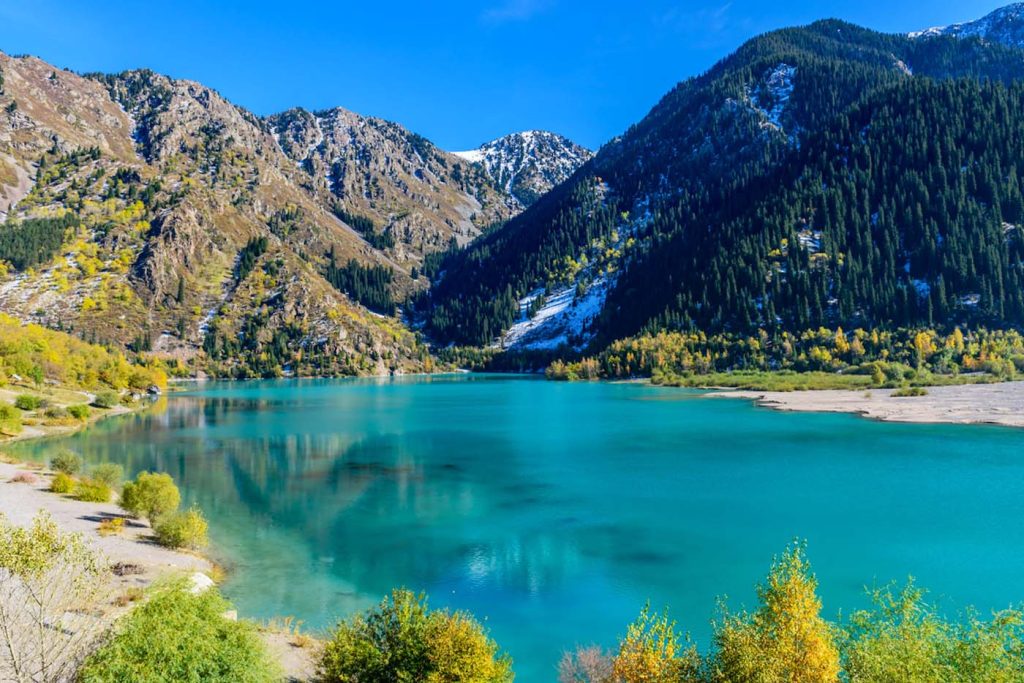
Issyk-Kul Lake is the eighth deepest lake in the world, with a maximum depth of 2,192 feet or 668 meters. It is located in the Kyrgyz Republic or Kyrgyzstan and is the second-largest saltwater lake in the world after the Caspian Sea.
Despite its high altitude, the lake never freezes due to its high salinity. The lake is fed by numerous rivers and streams, and its waters are known for their therapeutic properties.
Issyk-Kul Lake is surrounded by stunning mountain ranges, making it a popular destination for outdoor activities such as hiking, skiing, and rock climbing. It is also an important region for biodiversity, hosting a variety of plant and animal species.
9. Great Slave Lake (2,015 feet or 614 meters)
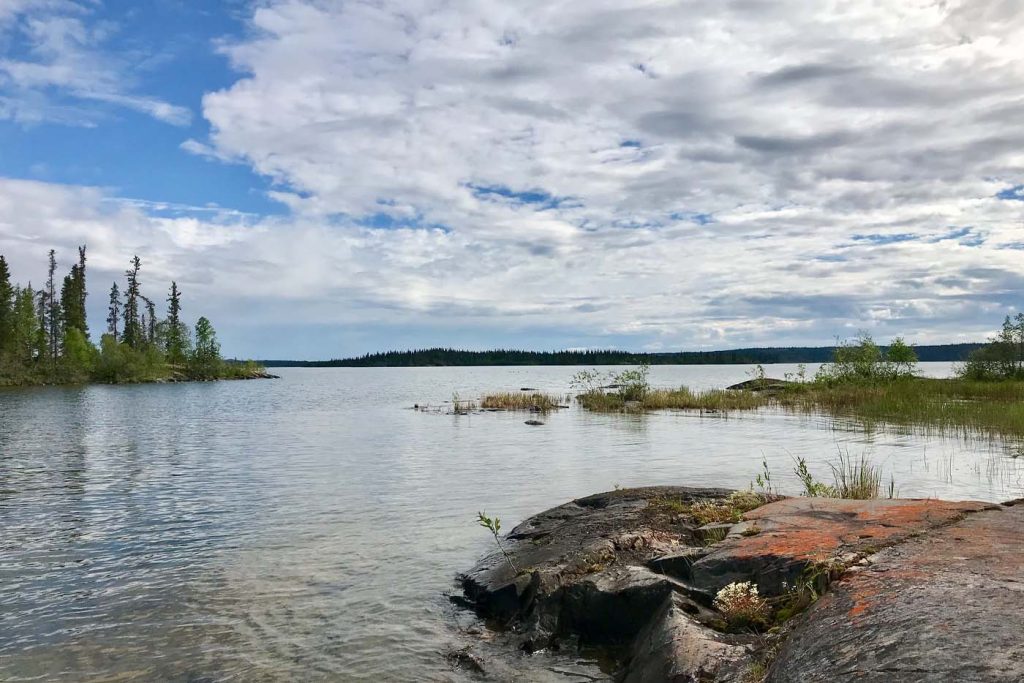
Great Slave Lake, located in Canada’s Northwest Territories, is the ninth deepest lake in the world, with a maximum depth of 2,015 feet or 614 meters. The lake covers an area of over 27,000 square kilometers and is the deepest lake in North America. It’s also the second-largest lake entirely within Canadian borders.
Great Slave Lake is an important source of freshwater for the surrounding communities and supports a diverse range of wildlife, including fish, birds, and mammals such as beavers and otters. The lake is also home to a number of indigenous communities, who have relied on its resources for thousands of years. Today, the lake is a popular destination for tourism and outdoor recreation, with opportunities for fishing, boating, and wildlife viewing.
Located in the Northwest Territories of Canada, Great Slave Lake is the deepest lake in North America and the ninth deepest in the world. With a surface area of over 27,000 square kilometers, it’s also the second-largest lake entirely within Canadian borders. It’s fed by numerous rivers, including the Mackenzie River, which is Canada’s longest river.
10. Crater Lake (1,949 feet) – United States
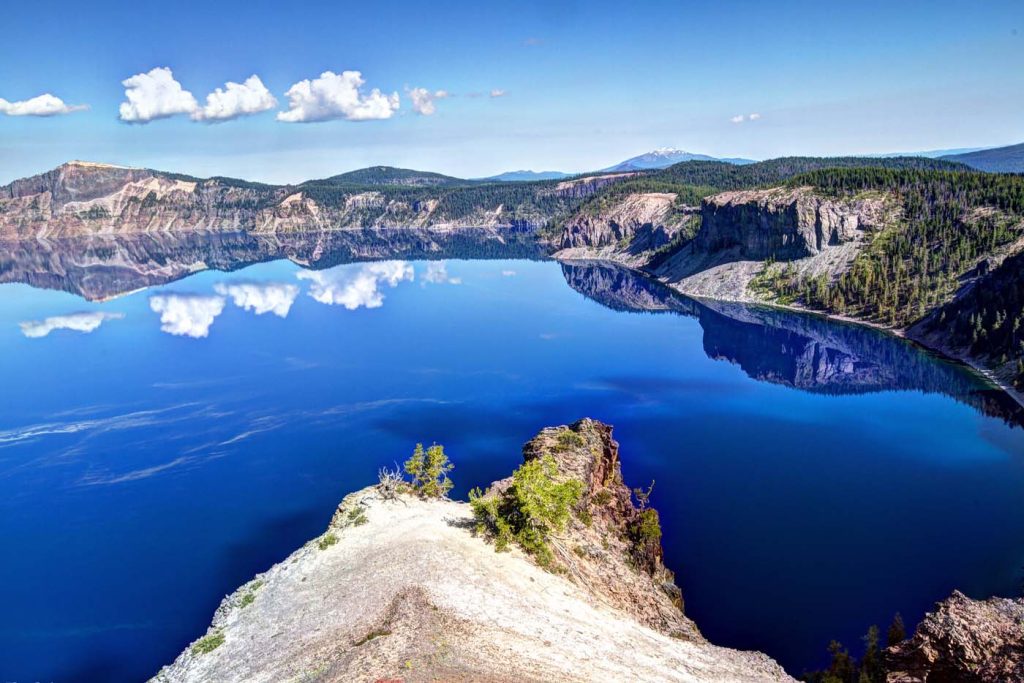
Crater Lake is a stunning lake located in the United States, specifically in Oregon. What makes it unique is that it was formed by a massive volcanic eruption that occurred around 7,700 years ago. The eruption caused the peak of Mount Mazama to collapse and left behind a giant caldera. The caldera then filled with water, creating the deep blue lake we see today. Crater Lake is the deepest lake in the United States, with a depth of 1,949 feet (594 meters).
The lake’s deep blue color and pristine waters are a result of its isolated location, which prevents pollutants and sediments from entering the lake. Crater Lake is a popular tourist destination, attracting millions of visitors each year who come to marvel at its beauty and explore the surrounding national park.
11. Lake Matano (1,936 feet) – Indonesia

Matano Lake is a fascinating lake located in Indonesia, on the island of Sulawesi. It is the deepest lake in Indonesia, with a depth of 1,936 feet (590 meters). Matano Lake is a freshwater lake and is renowned for its clear and pristine waters, which are home to many unique species of fish and other aquatic creatures.
The lake is surrounded by dense forests and towering mountains, providing a stunning backdrop to the serene waters. Matano Lake is not only a popular tourist destination, but it is also a vital resource for the local communities. The lake’s waters are used for drinking, irrigation, and fishing, providing a source of income and sustenance for many.
12. General Carrera Lake/Lake Buenos Aires (1,923 feet) – Chile and Argentina

General Carrera Lake, also known as Lake Buenos Aires, is a magnificent lake located on the border between Chile and Argentina. It is the largest lake in Chile and the second-largest in Argentina, with a total area of over 1,850 square kilometers. The lake’s most prominent feature is its breathtaking turquoise waters, which are a result of the surrounding glaciers melting and depositing minerals into the lake.
General Carrera Lake is also famous for its numerous islands, many of which are uninhabited and offer visitors a unique opportunity to explore the pristine and untouched wilderness. The lake is a popular destination for fishing, kayaking, and other outdoor activities, as well as for its stunning scenic views.
13. Hornindalsvatnet (1,686 feet) – Norway
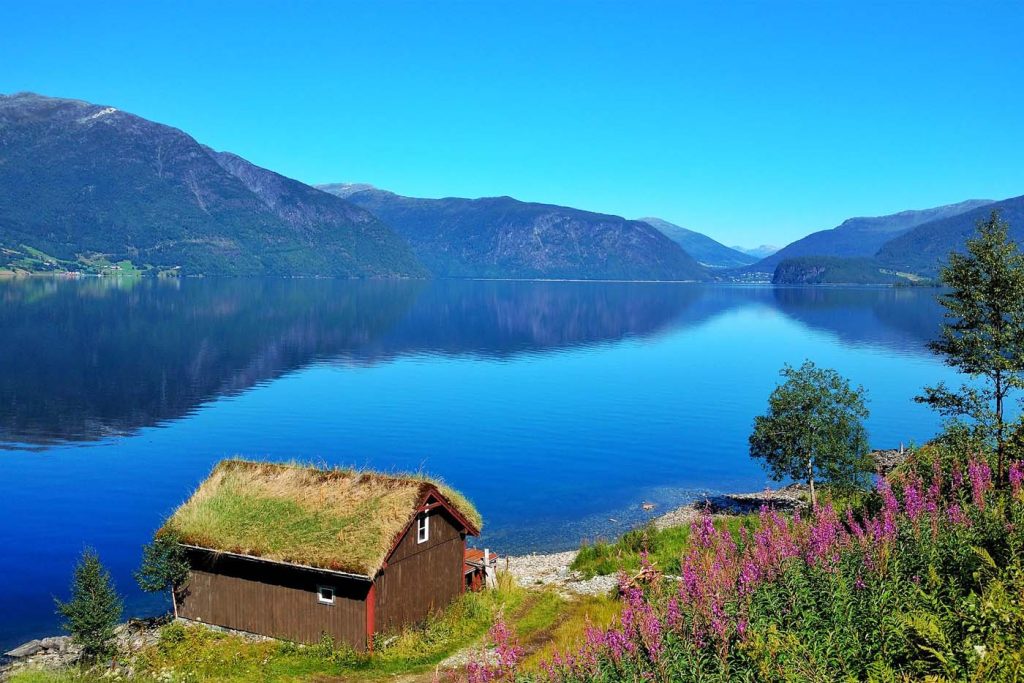
Hornindalsvatnet is a lake located in Norway in the Sogn and Fjordane county and is the deepest lake in Europe. It has a maximum depth of 514 meters (1,686 feet) and covers an area of 51 square kilometers. The lake is known for its crystal-clear water, which has a striking blue-green hue.
The lake’s deep waters also have unique geological features and scenic surroundings, with steep mountains rising up from its shores. Visitors can take boat trips on the lake to explore its depths and enjoy the beautiful scenery.
14. Quesnel Lake (1,677 feet) – Canada
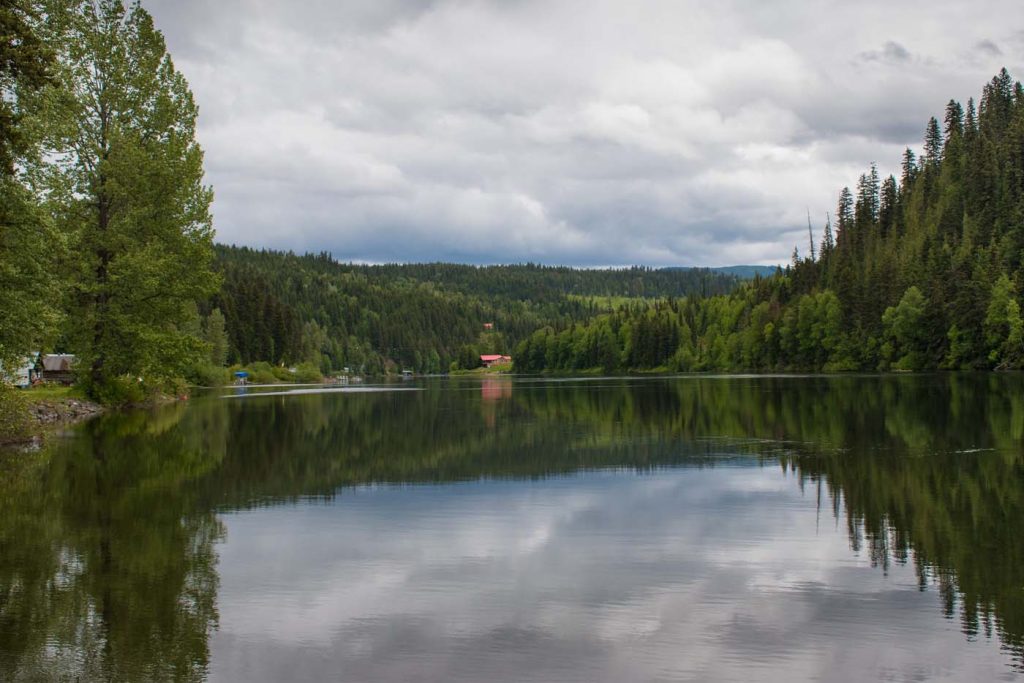
Quesnel Lake is a large glacial lake located in British Columbia, Canada, with a maximum depth of 511 meters (1,677 feet). The lake is fed by numerous streams and is home to several species of fish, including rainbow trout, lake trout, and sockeye salmon. The lake is a popular destination for fishing, boating, and camping, with several resorts and campsites located around its shores. In 2014, a tailings dam breach at the Mount Polley copper and gold mine caused a significant environmental disaster, releasing millions of cubic meters of tailings into the lake.
15. Lake Toba (1,657 feet) – Indonesia

Lake Toba is a large volcanic lake located in the northern part of the Indonesian island of Sumatra., with a maximum depth of 505 meters (1,657 feet). It is the largest lake in Indonesia and the largest volcanic lake in the world. The lake was formed about 74,000 years ago when a massive volcanic eruption created a caldera that eventually filled with water.
The lake is also known for its cultural significance, as it is the site of the Batak Toba people, who have lived in the area for thousands of years. The lake is surrounded by lush forests and is a popular tourist destination, with several resorts and homestays located around its shores. Visitors can enjoy swimming, fishing, and exploring the lake’s many natural and cultural attractions.
16. Sarez Lake (1,657 feet ) – Tajikistan
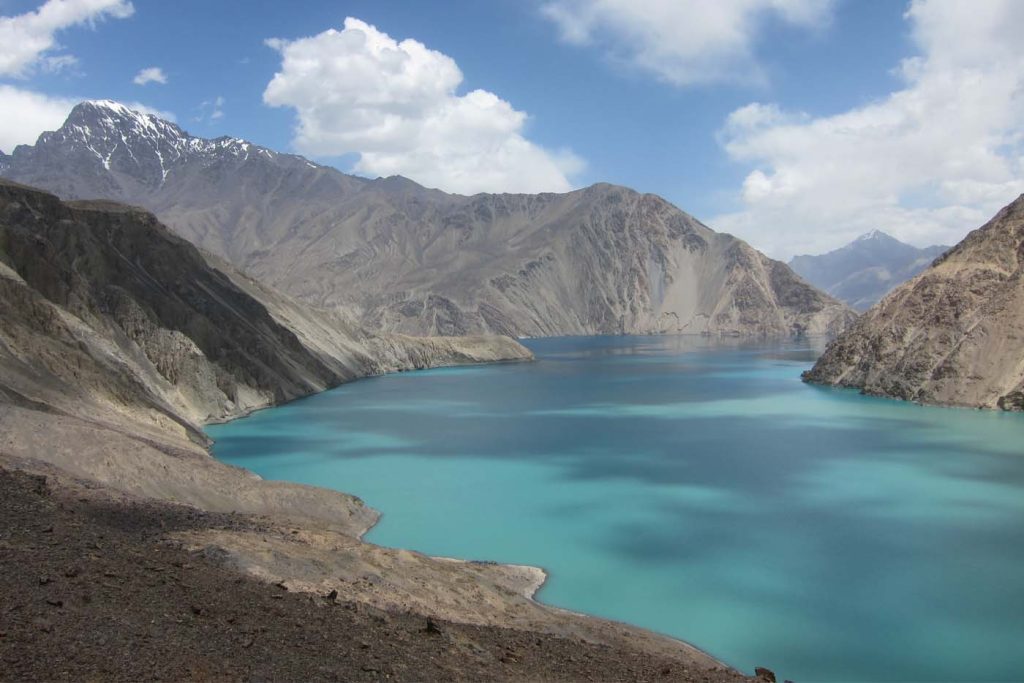
Sarez Lake is a stunning glacial lake located in Tajikistan’s Pamir Mountains, surrounded by rugged and breathtaking terrain. The lake was created in 1911, following a massive earthquake that triggered a landslide and dammed the Murgab River. The resulting lake is one of the deepest in the world, with a maximum depth of 1,657 feet (506 meters).
The lake’s waters are a vivid blue-green, with crystal-clear visibility. Due to its remote location and difficult access, Sarez Lake is largely untouched by human activity, and its surrounding area is home to a diverse range of flora and fauna.
17. Lake Tahoe(1,645 feet) – United States
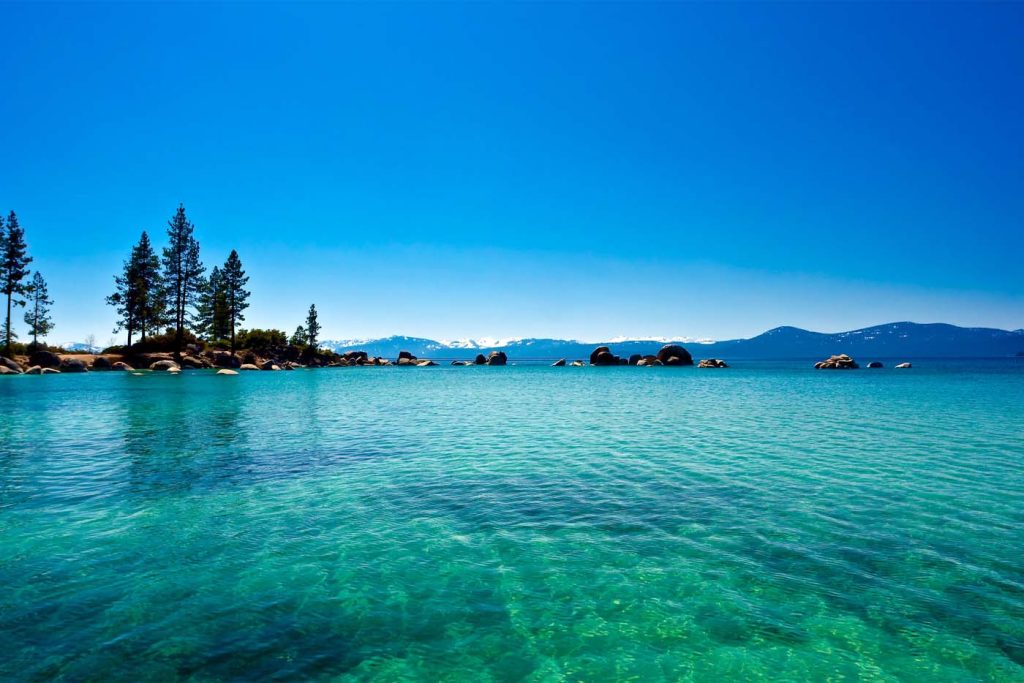
Lake Tahoe, is a large freshwater lake located in the Sierra Nevada mountains, on the border between California and Nevada. It is the largest alpine lake in North America and the second deepest lake in the United States, with a maximum depth of 1,645 feet or 501 meters.
Tahoe Lake is famous for its clear, turquoise waters, which are surrounded by stunning natural scenery, including forested mountains and rocky shorelines. The lake is a popular destination for outdoor recreation, including swimming, boating, fishing, and hiking, with several parks and beaches located around its shores.
18. Argentino Lake (1,640 feet) – Argentina

Lake Argentino, located in the Patagonia region of Argentina, is one of the country’s largest and deepest lakes, with a maximum depth of 1,640 feet (500 meters). The lake is fed by numerous glaciers, including the Perito Moreno Glacier, which is one of the region’s most popular tourist attractions.
Lake Argentino’s waters are a vivid blue-green, due to the presence of glacial silt, and its shoreline is home to a diverse range of flora and fauna, including the endangered huemul deer. The lake is a popular destination for outdoor recreation, including hiking, fishing, and boating, and is surrounded by stunning natural scenery, including the Andes Mountains and the Southern Patagonian Ice Field.
19. Lake Kivu (1,558 feet) – D.R.C Congo and Rwanda
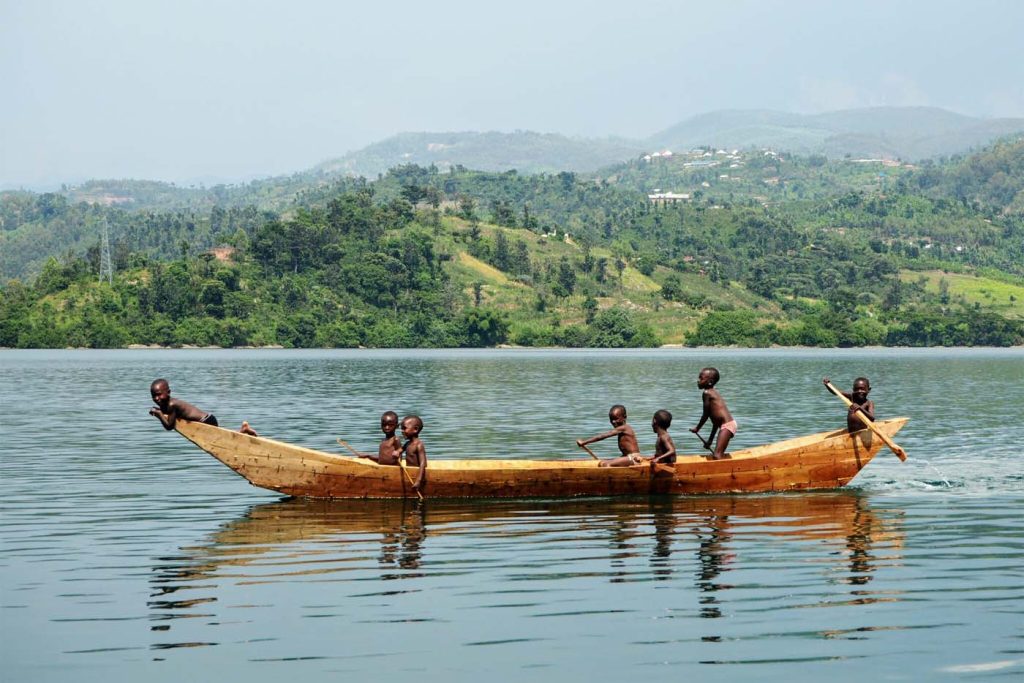
Lake Kivu is a freshwater lake located in the Great Rift Valley of East Africa, on the border between the Democratic Republic of the Congo and Rwanda. It is one of the African Great Lakes and the fifteenth deepest lake in the world, with a maximum depth of 1,558 feet or 475 meters. Lake Kivu is known for its unique ecosystem and biodiversity, including over 40 species of fish and a variety of bird species. The lake is also a source of geothermal energy and methane gas, which is extracted for use in electricity generation.
20. Salvatnet (1,522 feet) – Norway
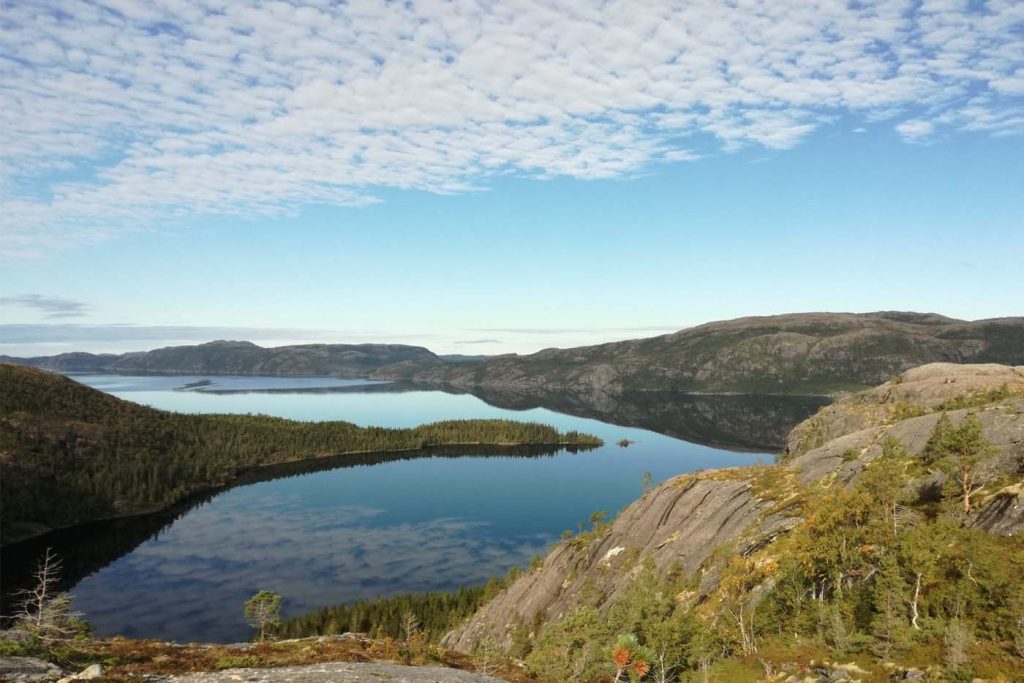
Nestled in the picturesque Trøndelag County in Norway, Salvatnet is a freshwater lake that spans across the municipalities of Namsos and Nærøysund. This hidden gem is the second-deepest second-deepest lake in Norway and Europe, and the twentieth-deepest lake in the world, with a depth of 1,522 feet or 464 meters.
The lake’s beauty lies in its majestic setting, surrounded by towering mountains that provide a stunning backdrop for nature enthusiasts. One of the unique features of Salvatnet is its glacially-fed waters, which lend the lake a mesmerizing blue-green hue that captivates visitors. Its crystal-clear waters are also home to various fish species, providing an excellent spot for fishing enthusiasts.
NOTE: There are conflicting depth measurements for Lake Kivu and Salvatnet regarding which one is the deepest lake. Some estimates suggest that Lake Kivu has a maximum depth of 1,575 feet or 480 meters, while Salvatnet is believed to have a maximum depth of 1,581 feet or 482 meters.
Wrapping Up the deepest lakes in the World
These top 20 deepest lakes in the world are truly remarkable bodies of water that offer a glimpse into the earth’s most hidden secrets. Whether you’re an avid fisherman, scuba diver, or just someone who loves exploring the great outdoors, these lakes are definitely worth a visit. From Lake Baikal in Russia to Lake Tahoe in the United States, each lake offers its own unique beauty and ecosystem that’s just waiting to be explored.





